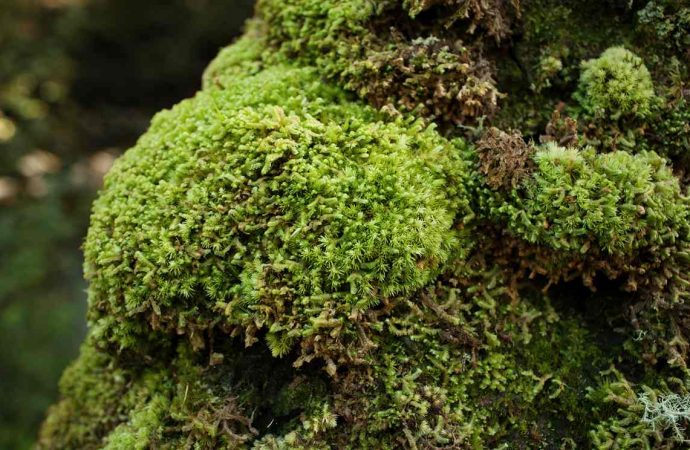A reconstruction using geological evidence, fossils and ancient spores has revealed the crucial role of moss in creating the conditions for life as we know it
Scientists have identified the creature that gave the Earth its first breath of fresh, clean air and made life possible for everything ranging from ardvaarks to Olympic athletes and zebra finches. It was a moss.
The drama unfolded more than 400 million years ago and there are no surviving witnesses. The episode had to be reconstructed in computer models from the testimony of rocks, the fossils in the sea and the few spores preserved in ancient sediments.
The hero of the drama is a primitive, low-growing moss that drew down carbon from the air, created topsoil for the first vascular plants, and in 40 million years or so increased oxygen in the atmosphere to levels that endure today.
An international team of scientists tells the story in the Proceedings of the National Academy of Sciences. It begins in an unrecognisable version of our world. Around 445 million years ago most the planet’s terrestrial landscape was being assembled by plate tectonics into a southern hemisphere supercontinent called Pangaea. What is now the Appalachians in the US were arcs of rock in the tropic ocean. The northern hemisphere was almost entirely ocean and almost all life was concentrated in the sea.
The bony fishes had yet to evolve. Trilobites patrolled what was then essentially Waterworld. Whatever life clung to the exposed rocks in what geologists call the Ordovician period would have been little more than a fine mat of microbes.
Rock-hugging green mosses evolved, and spread over dry land, using photosynthesis to take atmospheric oxygen from perhaps only a quarter of today’s level to the present life-giving lungful.
“It’s very hard to get direct evidence of what’s on land, because most stuff is preserved in ocean sediments, so we rely on freaky, unusual terrestrial preservation. But what we know is there was some productivity on the land,” said Tim Lenton, professor of climate change and earth system science at the University of Exeter, who led the study.
“What we are seeing are the first true plants – mosses, liverworts, bryophytes – entering what was previously Matworld. You could think of them as creating thicker, more luscious carpets.”
Within 20 to 40 million years, the supercontinent-sized carpet of mosses had begun to fashion the modern world. As carbon dioxide levels fell, global temperatures dropped and the first glaciations began. The rocks weathered to become soils. The first vascular plants of the Silurian period began to take root, to be followed by the ferns and horsetails of the Devonian, still more than 400 million years ago. Creatures began, tentatively, to leave the sea and seek food in the first foliage.
“I like to think of things toddling out of the ocean onto the sea shore and then toddling back in again,” said Lenton. “We might have had a few quirky visitors onto the land in search of food, and once you have established Mossworld, you have a food source. You’d expect animal evolution to take advantage.”
By the late Silurian, club mosses as tall as 30 centimetres may have begun to add variety to the scenery. It would have been a landscape familiar to fell-runners on modern Dartmoor.
“I spend a lot of time thinking about Mossworld today because I run around as a fell-runner when I am not being a scientist, and Dartmoor nearby is carpeted with sphagnum moss bogs. I often think about what Mossworld or Lichenworld looked like because I see a lot on my fell runs on Dartmoor,” Lenton said.
“It’s exciting to think that without the evolution of the humble moss, none of us would be here today. Our research suggested that the earliest land plants were surprisingly productive and caused a major rise in the oxygen content of the Earth’s atmosphere.”
Source: The Guardian

































Leave a Comment
You must be logged in to post a comment.